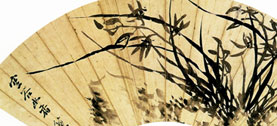Interpreting Great Wall from archaeological perspective
Author : TANG XIAOFENG Source : Chinese Social Sciences Today 2019-10-17

Story of the Great Wall
Luo Zhewen (1924–2012), an expert on ancient Chinese architecture, studied with the master architects Liang Sicheng and Liu Dunzhen. Since his youth, Luo observed and studied the sites of the Great Wall. In Story of the Great Wall, he introduces the history of the Great Wall from the pre-Qin to the Qing dynasties, the function and structure of the wall, various sites and how the wall was built.
How were required building materials such as stones, lime and bricks carried to the mountains step by step? People at the time used a method of passing along, and they lined up from the foot of the mountain to the ridge to do this. The building materials were handed along from person to person. The advantage of this method was to reduce exertion. Especially on narrow mountain roads, this reduced the chance of men colliding while ferrying materials back and forth and improved transportation efficiency.
As for why the Great Wall was built on the ridge, Luo said that the ridge itself is like a big wall, so it is even more of a defensive move to build ramparts on the ridge. It was preferable to incorporate the ridge’s steep cliffs and precipitous slopes into the wall.
Those who have been to the Yumen Pass site might be curious about the special form of the building. Its construction method involved layering reeds or rose willow branches and covering these with a layer of sandstone. This layer-by-layer formation would not stop until the structure was built up to five or six meters high. Rose willow is a tree species unique in sandy environments, and the reeds grow profusely near rivers. The wall construction utilized this ecological feature.
People’s historical recollections with regard to the Great Wall have been changing from generation to generation. The story of Meng Jiangnü and old frontier fortress poems are filled with sorrow and tears for the construction work and wars. In the era of Lu Xun (1881–1936), people’s feelings about the Great Wall were eased, but still mixed. “What a pity for the numerous workers who were exhausted to death in the building of the wall. It was vain work, because it could not really stop invasions from the north. Now as a historical site, it should be well preserved.” Lu Xun sighed, “The great yet accursed Great Wall!”
In modern times, the significance of the Great Wall has changed dramatically. Luo pointed out that historical dynasties have disappeared with social advancement, becoming only memories recorded in history museums. The Great Wall has evolved from its original military mission. Now it serves as an incomparable historical site.
(Edited by YANG LANLAN)
Interview with Wang Gungwu on significance of studying overseas Chinese
Wang Gungwu is a distinguished Australian historian who studies overseas Chinese. He currently works at the Faculty o...
-
On the rat/mouse of the zodiac
2020-02-20
-
Regional development calls for Huaihe culture’s soft power
2020-01-10
-
Archaeological discoveries unveil Maritime Silk Road
2020-01-06
-
China’s industrial art printing
2019-12-10
-
Yue-Gan Ancient Road: A journey into Hakka history
2019-05-13
-
The Lantern Festival in Dream of the Red Chamber
2019-02-18














 2011-2013 by www.cssn.cn. All Rights Reserved
2011-2013 by www.cssn.cn. All Rights Reserved